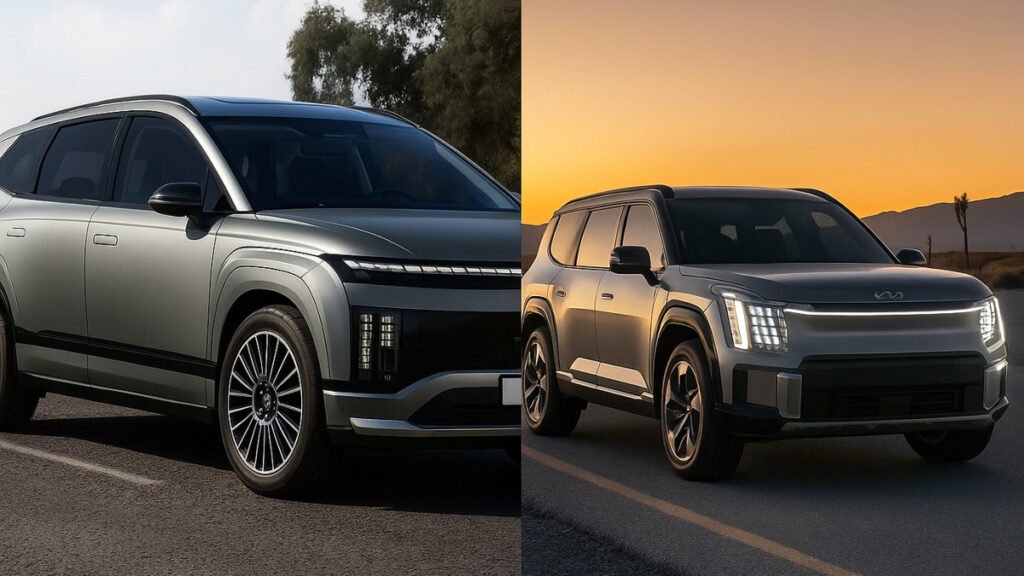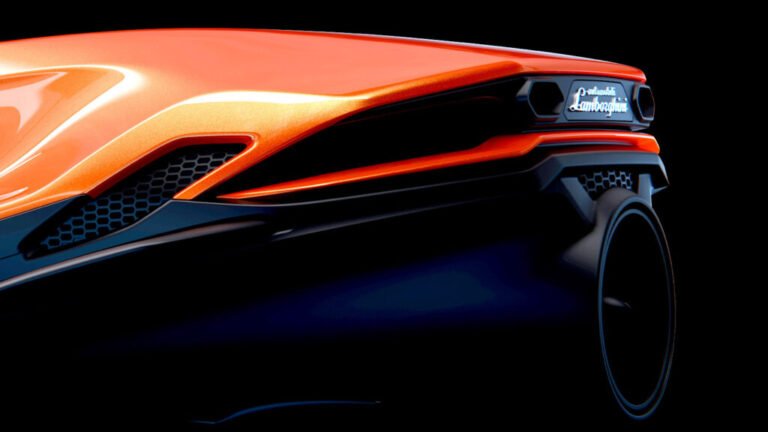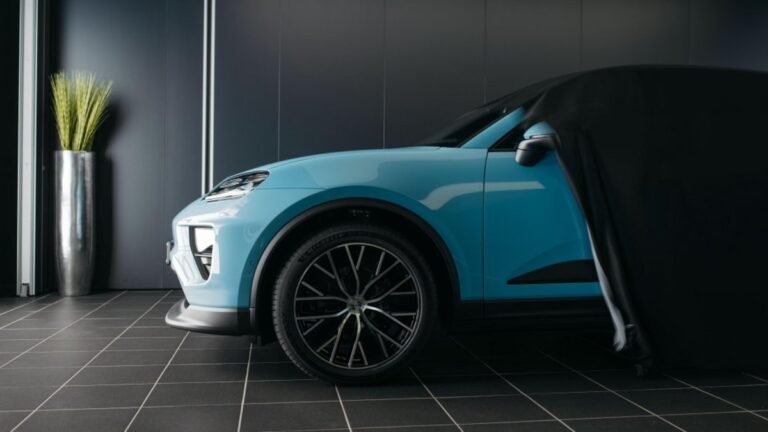
Your budget will dictate which of these two SUVs you should buy
Hyundai and Kia have both just reported record sales for August, continuing months of strong momentum for the Korean brands in the United States. It’s always intriguing to compare their sales, since multiple Hyundai and Kia cars share the same platforms, powertrains, and technologies—it’s chiefly design that sets the two apart.
Based on the latest sales figures, we couldn’t help but notice that Kia’s three-row electric SUV, the EV9, is easily outselling its Hyundai sibling, the Ioniq 9. This conflicts with the trend of Hyundai typically selling more EVs than Kia, so let’s take a closer look at the numbers, as well as which of these two electric SUVs is best.
EV9 On A Roll This Year
Kia
Kia’s biggest EV saw sales of 2,679 units in August, increasing its yearly total to 9,354 units so far. Not only was August the EV9’s best-ever month, but it represented an increase of 54% over the previous month.
Hyundai sold 1,016 units of the Ioniq 9 last month, less than half that of the EV9’s total. For the year, sales of the Ioniq 9 total 3,102 units, but it must be noted that while the EV9 has been on sale for a while now, the Ioniq 9 only arrived here in May, so its lower sales for the year make sense. Still, we would have expected the Ioniq 9 to be closer to the EV9’s total by now, especially given how strongly Hyundai’s other EVs are selling.
The Hyundai Ioniq 5 registered 7,773 sales last month, far surpassing the Kia EV6’s 1,796 units. Hyundai also sold 1,047 Ioniq 6 sedans in August.
The Ioniq 9 and EV9 both qualify for EV tax credits of up to $7,500, but this will fall away at the end of September.
Related: Tesla Model Y L May Never Come To America—Here Are 3 Alternatives
Performance And Range: Hyundai Has The Advantage

Hyundai
Looking at the specifications, the newer Hyundai Ioniq 9 has a few advantages. Both models come standard with a single-motor, rear-wheel-drive variant with 215 horsepower, but the EV9 also gets a 201-hp RWD model that prioritizes range. Adding dual motors and AWD increases the output to 379 hp for the EV9, in which case the 0-60 time is as little as five seconds.
Hyundai’s top Ioniq 9, however, gets 422 hp, so it’s expected to be even quicker than the most powerful EV9. That will change again when Kia releases the EV9 GT, a performance model that should have in the region of 570 hp. For now, however, the Ioniq 9 has more potent versions for sale.
Looking at range, the EPA claims between 230 and 304 miles for the Kia, depending on the trim. EPA data for the Hyundai hasn’t been published yet, but Hyundai’s own estimates show a range of between 311 and 335 miles for the Ioniq 9.
Not only does the Ioniq 9 ultimately have more power, but its range estimates are better across the board, thanks to its larger battery.
Interior Design And Features

Kia

Hyundai
Both these EVs have large, airy interiors with a spaceship vibe. There is an abundance of technology, plenty of features, and generally solid materials, although you can spot some harder, cheaper plastics in both if you look closely enough.
Both seat seven occupants as standard, but a six-seater layout is available optionally. Common to both are standard items like a 12.3-inch touchscreen display, a 12.3-inch digital instrument cluster, heated front seats, and wireless Apple CarPlay/Android Auto.
There are a few minor differences, though. The Kia gets standard tri-zone climate control, whereas base Ioniq 9s have a dual-zone system. An auto-dimming rearview mirror, ventilated front seats, and a powered liftgate are standard in the Kia, but optional for the Hyundai.
The top Ioniq 9 Calligraphy trims get two-tone leather and a microfiber suede headliner, so these are more luxurious than any EV9, but they’ll cost you.

HyundaI
If you care about space, both have up to 32 inches of third-row legroom and 42.8 inches of legroom in the second row. Cargo space is in the Hyundai’s favor, though. It has 86.9/46.7/21.9 cubic feet behind the first/second/third rows, whereas the Kia gets 81.7/43.5/20.2 cubic feet. A slightly longer wheelbase and body length contribute to the Ioniq 9’s better space.
Pricing: Kia Offers Much Better Value

Kia
Pricing for the Kia EV9 starts at $54,900 for the Light RWD, excluding the tax credit. It increases to $57,900 for the Light Long Range RWD, $63,900 for the Wind AWD, $68,900 for the Land AWD, and $71,900 for the GT-Line AWD.
The Ioniq 9 is pricier, starting at $58,955 for the S. It goes up to $62,765 for the SE, $66,320 for the SEL, $71,250 for the Limited, $74,990 for the Calligraphy, and $76,490 for the Calligraphy Design.
Related: Best 7 Passenger EV? The Hyundai Ioniq 9 vs the Volkswagen ID Buzz
Final Thoughts
The newer Hyundai Ioniq 9 may not have fully hit its stride yet, but we understand why the Kia EV9 is outselling it right now. For less money, the EV9 generally offers more features, a similar amount of space, styling that some may prefer, and comparable performance at the lower end of the range.
If value for money is secondary, the Ioniq 9 hits greater heights, though. Its top trims are more powerful and have a longer range than the Kia, thanks to a larger battery. There are also more expensive-feeling materials in the Ioniq 9 Calligraphy models.
If you have a budget of up to around $65,000, we recommend sticking with the Kia, but if you can afford to push to the $75k mark, the Ioniq 9 has the edge.


